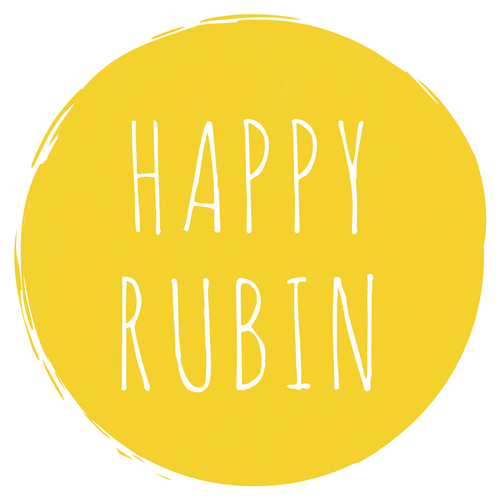![How To Deal With Sensory Overload [9 Tips For Overstimulation]](https://happyrubin.com/wp-content/uploads/2019/12/ik-ben-overprikkeld-150x150.jpg)
NLP Negotiation Process: Use this proven method to negotiate

Are you looking for NLP negotiation models, strategies, and tactics? In this article, you will find the best negotiation technique you can possibly use: The NLP Negotiation Process. You will also find precise examples of sentences you will use in this technique. You can use this NLP negotiation model for example for sales, procurement or any situation with opposing parties. Read along and find out all about it.
Contents of this page:
How does this negotiation technique work?
With this technique we separate the intention from the behavior. How do you do that? We can best outline this with an example sentence.
“Can you understand that {my positive intention}?”
That positive intention could be, for example, “I just want to get things right.” This technique is also very suitable for mediation.
What are the steps of this negotiating model?
- The parties explain their own experiences and desired solution.
- The parties state their positive intention behind the solution of the previous step.
- The parties will now work towards higher chunks (higher levels of abstraction) by naming the criteria / values behind the positive intention. By chunking up, connections and relationships can be found. Start with the most ‘angry’ party. Questions you can ask for this are: “What do you want?” What would that do for you? What’s important to you about that? “What does that do for you?” “What does that give you?”
- The parties chunk up just as far until there is a common criterion. This is the agreement frame. You know you are there when the original position becomes meaningless. The key here is to separate the intention from the behavior. Both say the same thing, but in a different way: “So if you can reach X, it doesn’t matter how you get it.”
- Open a dialogue: When did you start this mission with the positive intention? Do you recognize the other person’s positive intention? What more would you need to fulfill that high intention? You can also use the other questions of the inner negotiation technique: Visual Squash.
- Now you can do a ‘conditional close’: If you can keep {highest intention}, would you agree to {other option downchunk}? If we can ensure that this highest goal is achieved, will you work with us?
- Chunk down while holding an agreement (agreement frame, found in the article on follow and lead ). Only with good calibration – a shift in the body – you can continue.
- The parties can now propose new solutions (concrete behavior: downchunks) based on the agreement framework. They do this by chunking down again in order to relate to the current situation. The match framework is maintained during this process. If that does not work, it means that there was not yet high enough. Chunk the objecting party higher then.
- Check whether there are any ecological objections.
Mediation exercise: Resolving external conflict using this negotiation model
- Think of a conflict situation and assign person A and person B each a position within that conflict.
- Person A and B compete for two minutes.
- Now think about their positive intention for each party. Continue until you hear a core, belief, value, or fundamental need that both parties share.
- Both sides are now constantly trying to recognize and express their common elements.
- Use a higher logical level, such as these common values and needs, as the framework within which the solution is found.
- What resources do both parties have? Use them to solve the problem through collaboration.
- Remember the common goal and think win-win.
A conversational example:
{High positive intention} is important to you. And you probably also know: with one option you are a robot and with two options you have a dilemma.
You have applied your current strategies excellently until now. And you will spend a few more years on this planet, where you may find yourself in situations where it makes sense to have additional choices . Knowing that you can always use your old trustworthy choice whenever you want.
In that case, would you be interested in getting new choices in this situation?
You do your strategy very well. And it is the only option you have. You, a man who is flexible, thinks choices are important and wants {positive intention}. We have a solution: you keep your trusted strategy and let’s look at possible extra options that are just as good or even better than that one option.
Be creative and create new extra options. When proposing new alternatives, also use Ericksonian sentences:
- “I wonder if…”
- “Wouldn’t you be curious about …”
For internal conflicts there is the Visual Squash negotiation technique
The technique of this article is very suitable for conflicts between different people. However, there can also be internal conflicts within yourself. There is a technique for this: Visual Squash, which uses the same principle of this negotiation technique, but then applied to your own personal dilemma.

![5 Best Self Care Tips For College Students [#1 Advice]](https://happyrubin.com/wp-content/uploads/2021/09/the-best-self-care-tips-for-college-students-440x264.jpg)
![How To Stick To New Year’s Resolutions: 9 Tips [Smart & Sure Ways]](https://happyrubin.com/wp-content/uploads/2019/12/tips-voor-goede-voornemens-440x264.jpg)
![How To Stop Being So Hard On Yourself [9 Great Tips]](https://happyrubin.com/wp-content/uploads/2019/12/we-moeten-zoveel-van-onszelf-en-anderen-150x150.jpg)

![19 Best Ice Breaker & Get-To-Know-Eachother Games [Fun & Simple]](https://happyrubin.com/wp-content/uploads/2018/02/leukste-ijsbrekers.jpeg)
![Becoming More Social: 41 Tips [Improving Social Skills] [List]](https://happyrubin.com/wp-content/uploads/2018/06/sociale-vaardigheden1.jpeg)
![How to start a conversation with anyone: 15 tips [Making contact]](https://happyrubin.com/wp-content/uploads/2017/08/gesprekstechnieken1.jpeg)
![372 Friend Tag Q&A Questions [Best Friend Quiz]](https://happyrubin.com/wp-content/uploads/2019/05/best-friend-tag-vragen-voorbeelden.jpg)



![Clingy & controlling behavior of partner/date [Extreme examples]](https://happyrubin.com/wp-content/uploads/2020/06/claimerig-gedrag-van-partner-eigenschappen-en-voorbeelden-150x150.jpg)

![How to recognize if a man is in love [Signals & his body language]](https://happyrubin.com/wp-content/uploads/2020/05/verliefd-gedrag-van-mannen-herkennen-150x150.jpg)


![Free will and religion / theology [Verses & Quotes on free will]](https://happyrubin.com/wp-content/uploads/2020/10/religion-on-free-will-quotes-1050x640-1-150x150.jpg)

![Dealing With Setbacks & Hardship [Lessons & Examples]](https://happyrubin.com/wp-content/uploads/2018/11/omgaan-met-tegenslag-tips-hoe-dan.jpeg)
![NLP Agreement Frame: Use these exact sentences [Examples]](https://happyrubin.com/wp-content/uploads/2020/10/agreement-frame-nlp-1125x640-1-440x264.jpeg)
![122 Best Comebacks In Any Situation [Best Examples]](https://happyrubin.com/wp-content/uploads/2020/06/beste-comebacks-technieken-tips-440x264.jpg)
![Using Hypnosis to Stop Smoking [HowTo]](https://happyrubin.com/wp-content/uploads/2020/05/stoppen-met-roken-door-hypnose-150x150.jpg)
![Presuppositions language pattern: meaning & examples [NLP]](https://happyrubin.com/wp-content/uploads/2020/04/wat-zijn-vooronderstellingen-150x150.jpg)
![Peripheral Vision: Meaning & Exercise [Essential Skill]](https://happyrubin.com/wp-content/uploads/2020/04/perifeer-zicht-trainen-tips-150x150.jpg)

![How To Start A Coaching Business [21 Smart Tips]](https://happyrubin.com/wp-content/uploads/2018/11/coachingpraktijk-starten-tips.jpeg)
![How to make dreams come true? [33 tips to realize dreams 100%]](https://happyrubin.com/wp-content/uploads/2018/05/dromen-mijlpalen.jpeg)
![How To Become Rich? 27 Millionaire Tips [Guaranteed To Work]](https://happyrubin.com/wp-content/uploads/2018/01/hoe-kan-ik-rijk-worden.jpeg)
![77 Best Online Marketing Tools [Recommendations] [Also Free]](https://happyrubin.com/wp-content/uploads/2018/08/beste-onlne-marketing-tools-tips.jpeg)
![Complete List Of Virtues & Qualities [Including Explanation]](https://happyrubin.com/wp-content/uploads/2018/12/kernkwaliteiten-uitleg.jpeg)
![Being Attentive: How Do You Do That? [Meaning & 9 Tips]](https://happyrubin.com/wp-content/uploads/2019/05/attent-zijn.jpg)
![Being Conscientious: Meaning Of This Virtue [Explained]](https://happyrubin.com/wp-content/uploads/2018/07/Consciëntieus-persoon.jpg)


![Best Books About Burn-Out [Top 10] [Update 2025]](https://happyrubin.com/wp-content/uploads/2020/06/beste-boeken-over-burnout-lijst-440x264.jpg)
![Best Self-love Books [Top 10] [Update 2025]](https://happyrubin.com/wp-content/uploads/2020/04/beste-boeken-over-zelfliefde-aanraders-440x264.jpg)
![Life changing books: 10 books that change your life [2025 Update]](https://happyrubin.com/wp-content/uploads/2020/03/levensveranderende-boeken-tips-150x150.jpg)
![Top 10 Best Books: Recommendations Per Genre [2025 Update]](https://happyrubin.com/wp-content/uploads/2019/12/best-books-per-genre-150x150.png)
![Best Books On procrastination: Must Reads [List] [2025 Update]](https://happyrubin.com/wp-content/uploads/2019/11/beste-boeken-over-uitstelgedrag-tips-150x150.jpg)
![Joe Dispenza: Events To Attend [2025 & 2026] [All Info]](https://happyrubin.com/wp-content/uploads/2020/02/joe-dispenxa-events-440x264.png)
![Best Online Study Options [Online Education Top List]](https://happyrubin.com/wp-content/uploads/2019/03/best-home-study-options-440x264.png)
![Teachable Review & Experiences 2025 [Bad Online Training Tool?]](https://happyrubin.com/wp-content/uploads/2020/02/Teachable-review-ervaringen-150x150.png)
![Audible Review, Experiences & Special Discount [Scam?]](https://happyrubin.com/wp-content/uploads/2020/01/audible-review-ervaringen-150x150.png)
![Guest Posts Wanted [Free & Always Directly Accepted]](https://happyrubin.com/wp-content/uploads/2019/05/gastbloggen-regels.jpg)

How do I subscribe to your articles on my email?
Good Job.. What do you do ?
Informative and thanks. Your English is pretty good. 🙂
Très intéressant ce que vous proposez. J’aimerais recevoir vos articles par mail si vous le souhaitez. Merci d’avance.